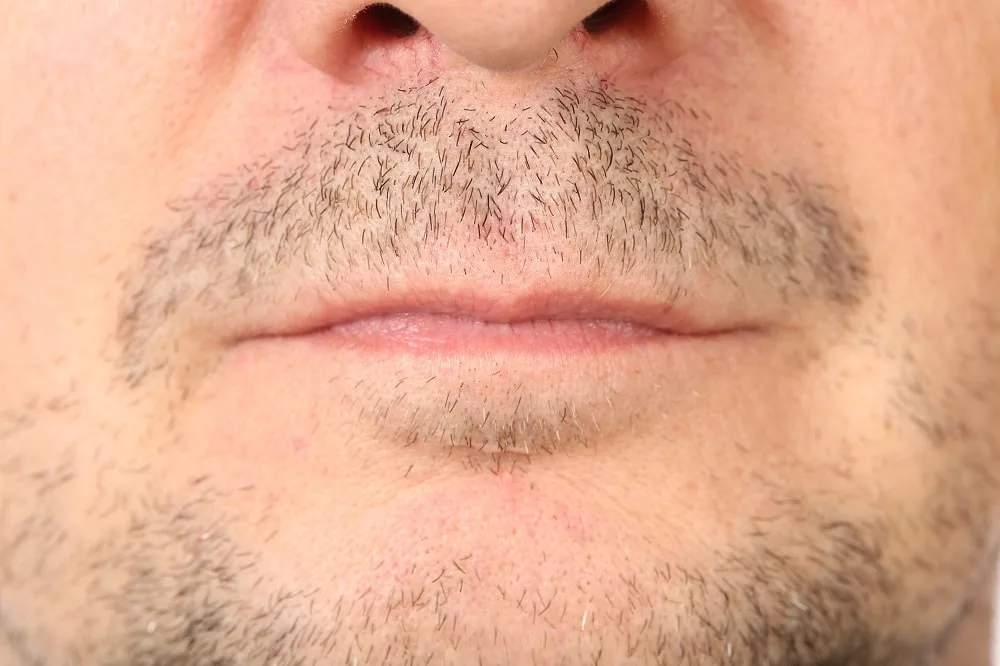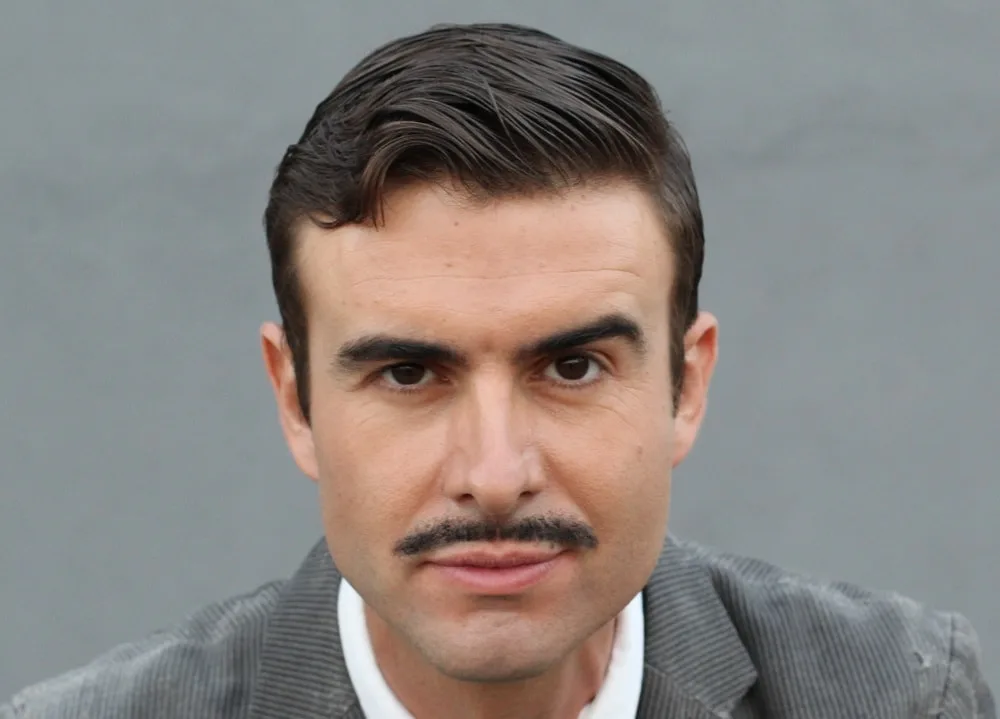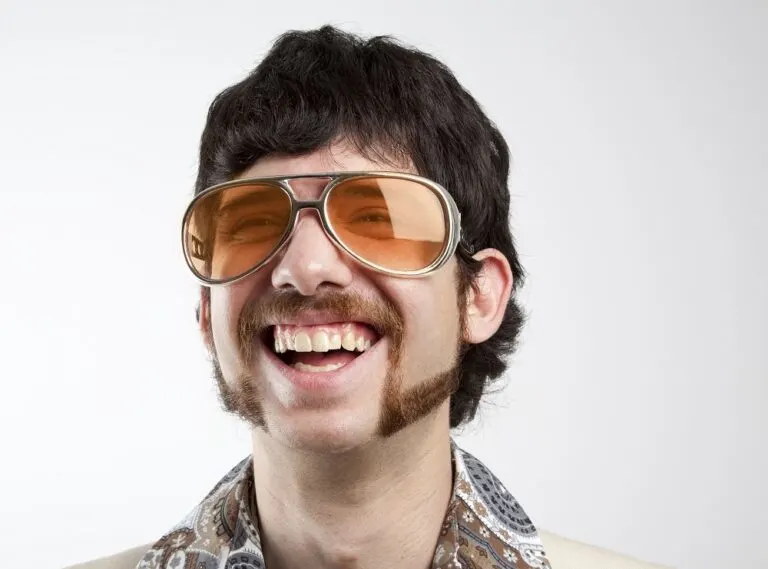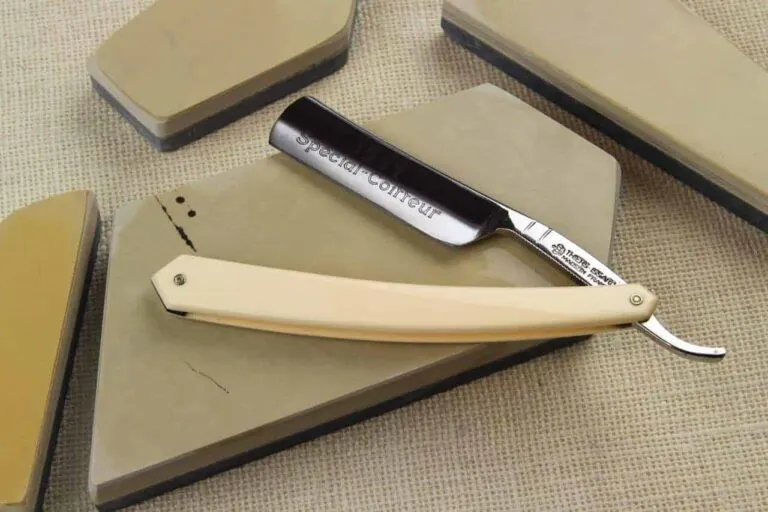The 4 Stages of Mustache Growth Cycle: Timeline and Explanation
A mustache is a personal statement that instantly presents your unique style to the wide world with near-unlimited options for stylization. To avoid panic or any confusion, it’s important to have a clear understanding of the mustache growth stages.
If you’re thinking about growing a mustache, or you’re in the process now, congratulations. Though the road may be long, the reward is sweet. In this guide, we’ll get down into the stages of mustache growth, from the initial growth phase to the final, mature stage.
Additionally, we will provide a timeline for each stage to give you a better idea of what to expect during the mustache-growing process.
So whether you’re a first-time mustache grower or a seasoned pro looking to optimize your growth, read on to learn more about the stages of mustache growth and how long each one typically lasts.
Finally, we bust some mustache myths and respond to some of the most common mustache growth stages questions. Let’s get started!
Mustache Hair Growth Cycle
According to the mustache hair growth cycle, it has 4-phases: Anagen, Catagen, Telogen, and Exogen phase.
Anagen Phase: The initial phase of the mustache hair growth cycle is Anagen, where the hair follicles on the upper lip begin to actively grow hair. The hair can appear thin and sparse.
Catagen Phase: A transitional phase that occurs after the anagen phase and lasts for a few weeks. in this phase hair follicles begin to shrink and detach from the blood supply, signaling the end of active growth during the catagen phase.
Telogen Phase: This is a resting phase that lasts for several months. This stage lasts longer than other stages. The hair follicle remains dormant and no new hair growth occurs.
Exogen Phase: At this stage, mustache hair reaches to its terminal length. This is the final phase of mustache’s hair growth cycle. the old hair is shed and falls out, making way for new hair growth in the next anagen phase.
After the exogen phase, the cycle repeats itself with the growth of new hair from the follicle’s root. This cycle of mustache’s hair growth and shedding varies in duration and timing depending on the individual.
Mustache Growth Stages
Depending on the length and look of your mustache, we have breakdown mustache growth stages into four parts and provided an approximate week-by-week breakdown of each stage. The weekly timeline may vary from person to person according to the individual hair growth rate. Understanding these stages can help you better care for your mustache and achieve the look you desire.
Stage 1: Stubble (Weeks 1-2)

This phase is a relatively easy stage to endure. As you put the razor down and your mustache begins to come in, the stubble can look quite attractive on many men.
During this stage, it’s probably a good idea to let your beard grow in as well. Letting your beard grow in will help to distract from the emerging peach fuzz under your nose.
After your stubble has grown in and genuine hairs have begun to sprout, it’s time to shave your beard and commit to a full mustache. Once you’ve shaved the beard, you’ve entered into the phase that breaks most would-be mustache growers.
Stage 2: Itchy Eyesore (Weeks 3-5)
By week 3, your mustache should be more visible, and the hairs will start to grow longer. As we’ve named it, the itchy eyesore phase is the worst stage of all when it comes to mustache growth. At this point, your mustache isn’t long enough to look very attractive.
In addition, depending on how patchy your growth is, some hairs will be much longer than others. The hairs dangling down onto your lip can become itchy, and at the same time, they’re too short to be combed aside.
The only advice we have for this stage is to endure or rock a shorter ‘stache.
Stage 3: Light At The End Of The Tunnel (Week 6-7)

When you see the light at the end of the tunnel, hope reemerges from its hibernation. For many men, This stage begins by week 6, just seems to emerge organically from the “itchy eyesore” phase.
In stage 3, your mustache hair should be long enough to start shaping and styling. This is the stage where you look in the mirror and say, “actually, this looks pretty nice” and you can begin to experiment with different mustache styles and find a look that works for you.
As we are all our own worst critics, during this phase you may see spots in different locations of your mustache you wish were different or more full. This phenomenon is entirely normal, and as you give your mustache more time to grow in, you will no doubt be happier and happier with how it looks.
Stage 4: Full Stache (Weeks 8 and Beyond)

The complete ‘stache phase is characterized by your mustache being fully grown in and styleable. This is where you’ll need to keep up with regular trimming, shaping, and grooming to keep your mustache looking its best. In general, the full ‘stache stage begins by week 8. You can choose between looks like the Chevron, the Handlebar, or the Horseshoe.
If you’ve gotten this far, congratulations! You now have a fully certified mustache, with all the rights and privileges therein.
Factors That Affect Mustache Growth Timeline
The weekly timeline of mustache growth can vary from person to person. This is because several factors can influence the rate and thickness of facial hair growth, such as:
Genetics: Your genes play a significant role in determining your facial hair growth pattern, density, and texture. Some people may have thicker or faster-growing facial hair due to their genetic makeup.
Age: Facial hair growth typically increases during puberty and slows down with age. Younger men may experience faster and more consistent facial hair growth than older men.
Hormones: Testosterone is the primary hormone responsible for stimulating facial hair growth. Hormonal imbalances or changes in hormone levels can affect the rate and thickness of facial hair growth.
Nutrition: A healthy diet rich in protein, vitamins, and minerals can promote hair growth and thickness. On the other hand, a poor diet or nutrient deficiencies can hinder facial hair growth.
Stress: High levels of stress can affect hormone levels and slow down facial hair growth.
Mustache Myths
There are a lot of mustache myths out there. Let’s see how they hold up to the facts.
Mustache myth #1: Shaving helps your mustache come in fuller.
This is a common myth that is not true. Shaving does not affect the thickness or color of mustache growth, and mustache will grow back at the same rate and thickness as before.
Mustache myth #2: A mustache is a food trap.
This myth goes along with the idea of the “flavor saver.” While it’s definitely true that mustaches can catch and hold onto food particles, the notion that no one can rectify this is absurd. With proper care and grooming, a mustache can be very hygienic.
Mustache myth #3:Mustaches are uncomfortable.
While some people may find mustaches uncomfortable or itchy during the initial growth phase, many men find that they get used to the sensation over time. Plus, with proper grooming and care, mustaches can be kept clean and comfortable.
If you think about the “coolest” people you know, you’ll note that it’s not the things they choose to surround themselves with that make them so cool. Why do we like the people we enjoy? Usually, they (more than anyone else) genuinely know themselves.
Tips For Mustache Growth and Care

In addition to the time spent growing your mustache, you must also care for it like a tender sapling.
- Pro Tip: During the “itchy eyesore” phase, you may feel the need to shave or trim off the bits of your mustache that itch you. Our advice – don’t yet. For some mustache styles, saving those longer itchy hairs will be important when it comes to styling.
Having some supplies on hand will help you keep your mustache as aesthetically pleasing as possible. These tools are helpful when growing a mustache but essential when caring for a fully grown-in mustache.
Mustache wax is your new best friend. Mustache wax helps keep the hold on your mustache, especially in the case of thick styles.
Just as essential as wax are beard scissors. Beard scissors will let you groom your mustache and style it once it has grown in.
A mini mustache comb will help keep your mustache in form.
The often-repeated nickname of the mustache, “flavor saver,” is not a name that people have created for nothing. A full mustache has a habit of collecting debris and dirt, and an uncared-for mustache can smell bad.
Using facewash as well as shampoo and conditioner will keep your mustache clean and spry.
FAQs on Mustache Growth Cycle
Here are some of the questions we get the most about stages of mustache growth.
How long does it take to grow a full mustache?
How long a mustache takes to grow depends on the individual in question, but you should give three to four months for your mustache to come in fully.
Will My Mustache Get Thicker?
Almost always, the answer is yes! Some hairs take a lot longer to grow in than others. If your mustache looks a little patchy now, endure – it will no doubt fill out a bit.
Does Mustache Hair Stop Growing?
At the end of the exogen phase new old mustache hair falls out and new hair growth starts the anagen phase. So, Mustache Hair never stops growing.
Conclusion
Growing a mustache can be a fun and rewarding experience, but it does require some patience and dedication. By following a proper grooming routine for each stage of mustache growth, you can achieve the look you want and keep your mustache looking its best. Thanks for reading. If you’re ready to get that mustache working full-time, put down the razor and wait. Trust us, you’ll be glad you did!






